by Stephen Weiner, courtesy of Bookmarks Magazine
Hailed as somewhere between a new literary phenomenon and a traditional storytelling medium, graphic novels have gained new respect in recent years.
A cousin of comic strips, a graphic novel is a story told in comic book format with a beginning, middle, and end. Graphic novels also include bound books conveying nonfiction information in comic book form. The term was first popularized by veteran cartoonist Will Eisner, who intended his 1978 book, A Contract with God: And Other Tenement Stories, for adult rather than child readers, and sold it through bookstores rather than in the growing number of American comic book specialty shops. The first big break for the graphic novel medium came in 1986, when Pantheon Books published the first volume of Art Spiegelman’s Pulitzer Prize-winning Maus, and DC Comics brought out Batman: The Dark Knight Returns and Watchmen, both sophisticated superhero stories aimed at adults.
All three books crossed over from the comic book world to the larger reading community and raised the hopes of both readers and cartoonists aspiring to break out of the comic book ghetto.
And break out they did. After Maus won a Pulitzer in 1992, graphic novels began to punctuate the literary establishment and inspire creative works in other media. Scott McCloud’s seminal book, Understanding Comics (1993), an exploration of how comics work and an overview of their history, was followed by graphic novels that found their way out of the comic book store: Neil Gaiman’s The Sandman , Peter Kuper Give It Up: And Other Stories by Franz Kafka, and Dan Clowes’ marvelous ode to teenage angst, Ghost World. Simultaneously, movie directors and serious novelists began weaving comic book themes into their work. Legendary cartoonist Robert Crumb, associated with the Underground Comix movement of the mid-1960s, became the subject of a documentary; Kevin Smith used the world of alternative cartooning as a backdrop to his 1996 movie, Chasing Amy. At the same time, novelists such as Jay Cantor drew upon the comic strip world for literary inspiration in his novel, Krazy Kat (1988), and Michael Chabon used the early world of comic books as the focal point of his Pulitzer Prize-winning novel, The Amazing Adventures of Kavalier and Clay (2000). Dark Horse Comics has created a comic book series, The Amazing Adventures of the Escapist, based on an imagined comic book described in the novel. Chabon also offered a proposal for the first X-Men movie (which was rejected but is viewable at his website) and co-scripting the feature-length film Spider-man II.
Recommendations:
Serious Fiction (for Older Teens and Adults)
| 1 | 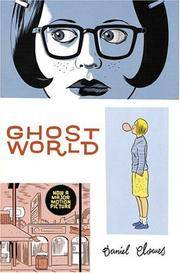 |
Ghost World by Clowes Daniel
Daniel Clowes (Fantagraphics Books, 1998) Ghost World, which formed the basis of the movie of the same name, tells the story of a summer immediately following high school graduation. Best friends Enid and Becky drift apart, the rift caused in part by Enid’s restless desire to attend college. Clowes successfully depicts youthful angst and alienation, but that’s only one skill in his arsenal. He’s also a master storyteller whose work defies convention; Ghost World‘s conclusion is unexpected, shattering, and true to the story. The illustrations are compassionate and understated. |
|
| 2 | 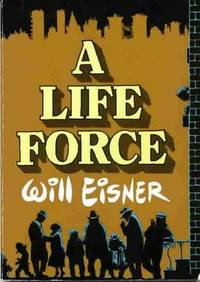 |
A Life Force by Will Eisner
Will Eisner (DC Comics, 2000) This graphic novel is unusual in many ways. Its protagonists are senior citizens, its setting is the Great Depression, and it asks the big questions: Does human life have a meaning? Is real change possible? What is our debt to others? Eisner’s illustration style is understated and effective. |
|
| 3 | 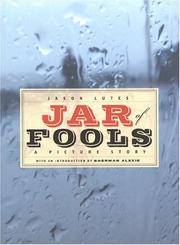 |
Jar Of Fools by Jason Lutes
Jason Lutes (Drawn & Quarterly Publications, 2001) Drawn in the European style, this tale of magician Ernie (“Ernesto”), devastated by his brother’s apparent suicide, ultimately offers hope. Ernie loses his devoted girlfriend and falls in with a small time con man and his daughter, but gains strength from the most unlikely place: his retired magic teacher and nursing home escapee, Al Flosso. Also recommended: Lutes’ graphic novel Berlin: City of Stones (2000), the first in a projected trilogy about Germany between the first and second world wars. |
|
| 4 | 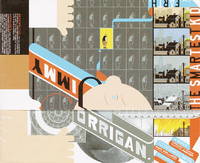 |
Jimmy Corrigan by Chris Ware
Chris Ware (Pantheon, 2000) Winner of the Guardian’s First Book Award, this multilayered book about Jimmy Corrigan’s search for his father, and ultimately himself, is difficult but rewarding. The artwork is deceptively simple; the reader enters Corrigan’s world only to find that the visual disorientation reflects his distorted view of the world. |
Fantasy (Each of the books listed in this section is part of a series that readers might enjoy.)
| 1 | 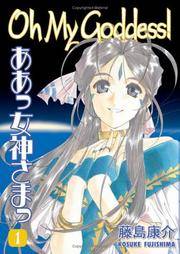 |
Oh My Goddess! Volume 1 by Kosuke Fujishima
Kosuke Fujishima (Dark Horse Comics, 2002) |
|
| 2 |  |
Mai, the Psychic Girl by Kazuya Kudo
Kazuka Kudo (Viz Communications, 1995) For readers 12 and older. In this realistic and absurd story, Mai appears like most 14-year-olds, except for her psychic abilities. She uses her powers primarily for jokes, but when her father is endangered, Mai realizes that she must use her powers with purpose. |
|
| 3 |  |
Hellboy by Mike Byrne, John Mignola
Mike Mignola (Dark Horse Comics, 1997) For high school students and adults. Originally called from the depths of Hell by the Nazis, Hellboy turned against them and became Earth’s greatest paranormal investigator, determined to protect humankind from the forces of evil. A team composed of both mutants and humans aids him in his quest. Mignola’s style is minimalist and trend setting. |
|
| 4 | 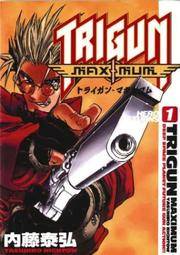 |
Trigun Maximum by Nightow- Yasuhiro/ Burns- Justin
Yasuhiro Nightow (Dark Horse Manga, 2003) For high school students and adults. This adventure book mixes comedy, science fiction, and the Old West. Protagonist Vash has a 60-billion double-dollar bounty on his head. Nightow’s style is cinematic and sincere in this fast paced thriller. |
Superhero Stories
| 1 | 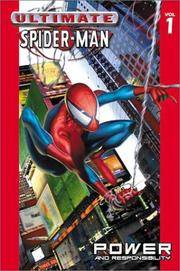 |
Ultimate Spider-Man by Bill and Bendis, Brian Michael Jemas
Brian Michael Bendis & Mark Bagley (Marvel Comics, 2001) Appropriate for readers 8 and older. This reworking of Spider-man’s origin has been updated for contemporary readers by including modern references and splashy artwork. Invented in the 1960s, Spiderman was the first superhero whose personal problems were harder to resolve than his fights with super-villains. This version of Spiderman is the basis for the current hit movies. |
|
| 2 |  |
Spirit Archives, Volume 7 by Will Eisner
Will Eisner (DC Comics, 2001) Appropriate for readers 8 and older. Eisner’s The Spirit was a model for adventure comics when it appeared in the 1940s and early ’50s. This series reprints all The Spirit stories chronologically, in full color. |
|
| 3 | 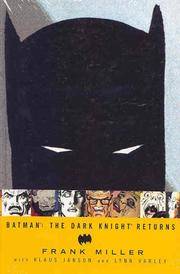 |
Batman by Miller- Frank/ Janson- Klaus/ Varley- Lynn/ Kane-
Frank Miller (DC Comics, 1997) For readers 13 and older. Originally published in the late 1980s, Batman charted a new course for superheroes with this concept: Batman, age 50 and deeply cynical, emerges from retirement to once again save Gotham City. The book is also noteworthy for the way it re-vamped comic storytelling techniques. |
Nonfiction
| 1 | 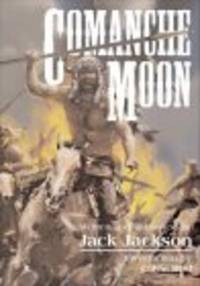 |
Comanche Moon by Jack Jackson; T R Fehrenbach; Calvin Reid
Jack Jackson (Reed Press, 2003) For high school students and adults. Originally published in 1979, this history of the Comanche Indians’ relationship with white Texan settlers is lively and well researched. It focuses on the last Comanche Chief, Quanah Parker, a child of an Indian father and a Caucasian mother, who leads the Comanche people during peacetime. The book includes photographs of Chief Quanah and a bibliography for further study. |
|
| 2 | 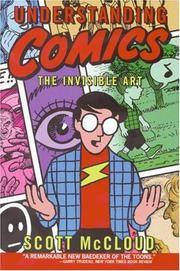 |
Understanding Comics by Scott McCloud
Scott McCloud (HarperPerennial, 1994) For readers 12 and older. McCloud’s book took the world by storm in its examination of the comics format, comics’ place in western culture, and the medium’s potential. Equally persuasive, McCloud’s cartooning style engages readers and cajoles them into wrestling concepts about artistic merit, expression, and form. |
|
| 3 | 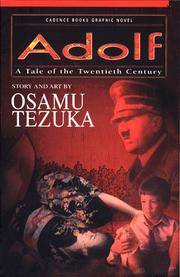 |
Adolf, Volume 1 by Volume 1 : a Tale Of the Twentieth Century Adolf
Osama Tezuka (Viz Communications, 1996) For older teens and adults. Adolf, a historical novel told in five volumes, tells the story of three people named Adolf at the time of World War II: the infamous dictator, a half-Aryan/half-Japanese man, and a Jew living in Japan and befriended by the half-Aryan prior to the war. The interplay of the three Adolfs gives cartoonist Tezuka an opportunity to examine the problems of racism, fascism, and personal identity. The translation is a bit rocky, and the art may be too cartoonish for some readers, but this work may be the closest thing to an epic in comic format since Spiegelman’s Maus. |
Autobiography/Biography
| 1 |  |
Our Cancer Years by Harvey Brabner, Joyce Pekar
Joyce Brabner and Harvey Pekar, illustrated by Frank Stack (Four Walls, Eight Windows, 1994) For older teens and adults. Pekar earned national recognition his autobiographical comic book, American Splendor, which inspired a movie of the same name. This stand alone graphic novel, at turns frightening and moving, chronicles his battle with cancer. |
|
| 2 | 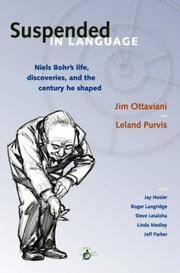 |
Suspended In Language by Leland Purvis, Roger Langridge, Jay Holser, Steve Leialoha, Linda Medley, Jeff Parker Jim Ottaviani
Jim Ottaviani and Leland Purvis (G.T. Labs, 2004) For readers 12 and older. Ottaviani’s earlier books, Fallout and Two-Fisted Science, both earned high praise. Here he examines the life of Neils Bohr, the largely unknown physicist who greatly influenced Albert Einstein and founded quantum mechanics. |
|
| 3 | 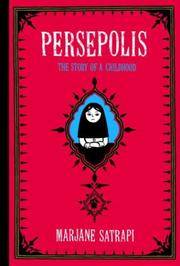 |
Persepolis by Marjane Satrapi
Marjane Satrapi (Pantheon, 2003) For high school students and adults. In this affecting memoir, Satrapi, a successful children’s writer, recounts the story of growing up under a repressive Iranian regime. The childlike illustrations counter the pervasive oppression. The next installment in Satrapi’s life story, Persepolis 2: The Story of a Return, is released as well. |
|
| 4 | 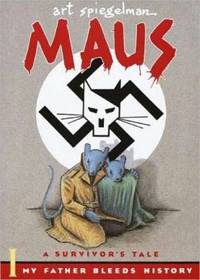 |
Maus a Survivors Tale My Father Bleeds History by Art Spiegelman
Art Spiegelman (Pantheon, 1986) For high school students and adults. In this masterpiece of comic art narrative, which portrays Jews as mice and Germans as cats, Spiegelman tells three stories. He relates the trials that his parents, Vladek and Anna, survived while living in Nazi concentration camps and their life in the United States to his father’s constant reliving of the second World War. He also recounts the story of himself as another Holocaust survivor. The black and white illustrations perfectly define the book’s theme. |
Stephen Weiner, Director of the Maynard Public Library in Maynard, Massachusetts, holds a master’s degree in Children’s Literature as well as a M.L.I.S., and has been writing about comic art since 1992. He has published articles and reviews in magazines such as Library Journal, School Library Journal, and Bold Ideas for Innovative Teaching. His books include 100 Graphic Novels for Public Libraries (1996), The 101 Best Graphic Novels (2001), and Faster than a Speeding Bullet: The Rise of the Graphic Novel (2003). In addition, he is co-author (with N.C. Christopher Couch) of The Will Eisner Companion (2004).
(This abridged article provided courtesy of Bookmarks Magazine. All rights reserved. For more information on the magazine, please visit www.bookmarksmagazine.com.)

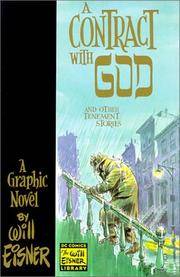



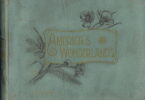
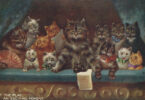

Century Training…